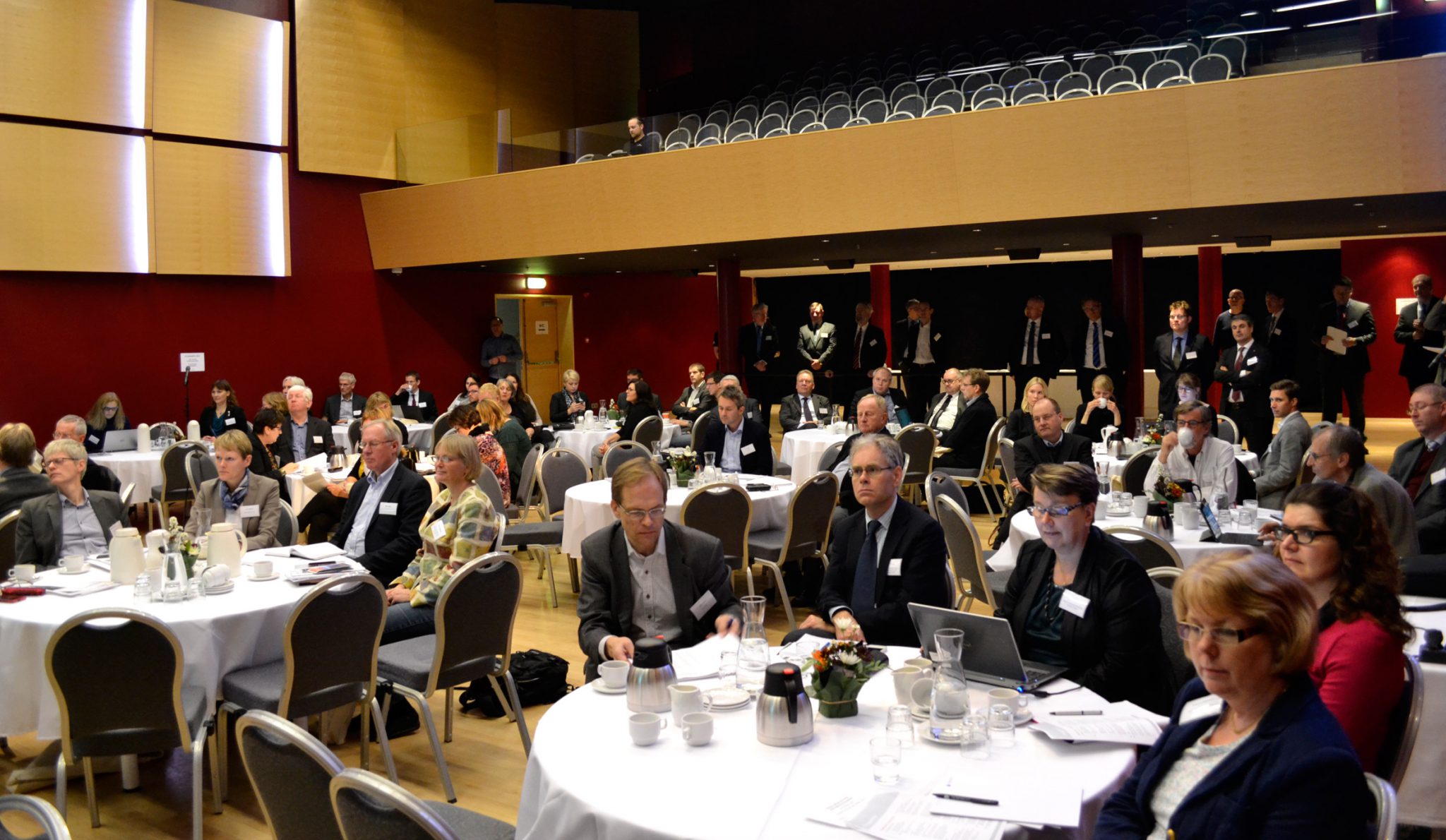The first day of Nordregio Forum is dedicated to bioeconomy. The key note speakers and other presentations have discussed challenges, opportunities and examples of solutions.

Sustainable management of bio-resources
After the forum was opened by Ragnheiður Elín Árnadóttir, Minister of Industry and Commerce in Iceland, it was time for the key note speakers. First out was Dadi Mar Kristofersson, Dean of School of Social Sciences, University of Iceland. He posed the question “Are we flying or falling with style?”. Unfortunately we have aggressively been using our resources in an unsustainable way, and today we seem to be “falling with style” in the sense that we do not have control of the development of our economies and consumption, was the answer.
With current resource use we cannot sustain growth for more than a few more decades. Unfortunately the demand for resources is rapidly increasing. Additional challenges such as a steadily increasing world population and the impacts of climate change make the need for a drastic change very clear.
Can we meet these challenges? It is possible but requires a dramatic shift towards sustainable production: better resource management, shifts towards an increased reliance on renewable resources, less wasteful use of resources. This efficient resource use is a common effort of the private sector and the public sector; some aspects are best solved by markets, while some require public intervention, Kristofferson stated.
Kristoferson ended his presentation on a positive note, believing that there is a possible overlap between our current “hedonist” life style and ones that are characterised by both healthy living and sustainability.
Local resources and economic independence of regions
Calum Davidson, Director of Energy and Low Carbon, Highlands and Islands Enterprise, Scotland, focused on the energy sector in Scotland. In the past there has been a lot of influx of investments and labour to establish production potential/structures for extracting energy resources. This created some small firms and service sectors. Today wind power is the latest “phase” in this development, but it has not contributed as much to the regional economy, development of firms or employment.
The turbines come from Denmark and Germany and this sector is not – and will probably never – create regional development locally. But for waves and tide there is a new industry in the making – and Scotland can be active from the start. This is not only about hard-core engineering, but also about services, design, university research, testing facilities, etc. There is a story to learn from how the wind-turbine industry developed in Denmark since the 70s.
Importantly, generation of electricity is a tool for regional development. There is an opportunity to change patterns around, with cities as consumers, and hinterland as both producer and centre of expertise – the periphery becomes the centre. Davidson lists three main factors for success: establishing testing grounds locally, clear financial rewards and solid triple-helix cooperation. According to Davidson, the Nordic countries are well-suited for the development of renewable energies in their countryside.
Territorial potentials for a green economy
After a regional and local perspective, the third presentation moved to the European scale. Peter Mehlbye, Director of the ESPON Coordination Unit, Luxembourg, Rasmus Ole Rasmussen, Senior Research Fellow, Nordregio & Anna Berlina, Research Assistant, Nordregio, gave a European context, introducing the ESPON programme, and more specifically the GREECO project Territorial potentials for a greener economy.
“What is the green economy?” Mehlbye asked, and answered the question with “Sustainable growth, win-win situations, green technological innovations and resource efficiency.” Many sectors are important, e.g. industry, agriculture, tourism, transports, energy, waste and recycling, bioeconomy, etc. According to Mehlbye, the green economy is a political ambition within all strands of EU policy: EU2020, Cohesion policy, 2020 energy targets, etc. Many resources are linked to the green economy in the new program period of the common funds policy and the 11 thematic objectives. The economic crisis has also been a catalyst for change, and there is a readiness to think outside the box.
All places have the potential to develop a greener economy and to contribute to economic development across Europe. The challenge is in finding the right focus, initiatives and supporting those. In this process, governance is important and can involve strategies at the regional level, connecting businesses, public procurement, capacity building, public awareness, to mention some.
Anna Berlina focused on the ESPON project Territorial Potentials for a Greener Economy (GREECO) that Nordregio was involved in. The aim of the project was to identify the territorial aspects and potentials related to the pursuit of a greener economy.
The project focused on economic sectors that can be organised in a hierarchical pyramid, with some sectors having greater territorial bounds than others. For instance, bioeconomy and energy have strong territorial bounds, while manufacturing and eco-innovation sectors have weaker ties to the territory. Greening of the sectors also differs in how they are driven by factors on the demand or supply side.
“Drivers and enablers for greening of the economy include: human resources, funding, awareness, new technology, voluntary actions, and also policy at different levels.”, Berlina stated.
Rasmus Ole Rasmussen highlighted the importance of territorial factors, saying that some territorial factors can drive the development, while others can act as hinders. Greening the economy is often place-based, consequently it differs between regions, which needs to be taken into account in policy-making. What are the most important territorial dimensions, how are they connected to sectors, what factors are fostering development, and which are conflicting?
It is evident that European countries are extremely diverse in their priorities: the economy, human sphere, environmental sphere, econosphere, will act as drivers or hinders in different parts of Europe. This was illustrated by their green economy performance index, based on a multi-criteria assessment, where Iceland among others is very highly placed.

